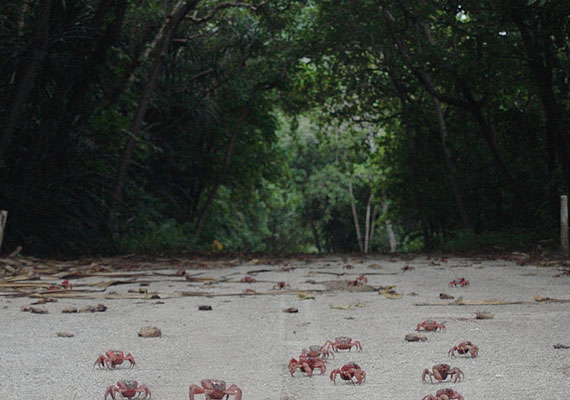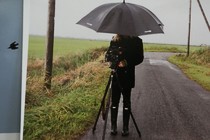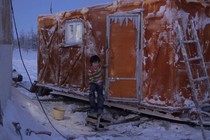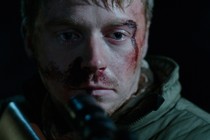Review: Island of the Hungry Ghosts
by Kaleem Aftab
- Christmas Island is the focus of this tale of human destruction, which has just premiered simultaneously at Tribeca and Visions du Réel

When the full moon shines down on Christmas Island, the Australian territory just off the coast of Indonesia, millions of crabs move from the jungle to the Indian Ocean. In Island of the Hungry Ghosts [+see also:
trailer
film profile], Australian filmmaker Gabrielle Brady uses this extraordinary migration as a metaphor for the refugees stationed in limbo on the island: they are people who are always seemingly moving sideways in their efforts to find asylum in Australia. The scenes of the army of crabs crossing the road are beautifully shot by cinematographer Michael Latham (who has photographed all of Kitty Green’s remarkable documentaries), and such are the luscious images that the film at times feels more like fiction than documentary. The mixture of aesthetic, subject, island location and narrative arc echo the work of Berlin Golden Bear winner Gianfranco Rosi and his Fire at Sea [+see also:
film review
trailer
interview: Gianfranco Rosi
film profile]. Island of the Hungry Ghosts premiered simultaneously at the Tribeca Film Festival and Visions de Réel, where it won the Buyens-Chagoll Award (see the news).
The narrative follows the work of Poh Lin Lee, a “trauma therapist” who lives with her family on the isle and talks to the asylum seekers who are being held within the island’s hidden detention centre. Under Australia’s border force law, it is illegal to arrive by boat to Australia and ask for refugee status. Those who attempt the journey are either intercepted by the Navy at sea and sent back from whence they came, or they’re taken to one of three remote islands and detained. We see some of the conversations that Poh Lin has with these asylum seekers and hear their extraordinary stories, and we see how the Australian system has been set up to keep these people in limbo. They are prisoners in all but name. Yet director Brady is also conscious of the fact that these stories are in danger of becoming white noise, just another story or film about refugees. To avoid simply trotting out images seen previously in the media, Brady makes the gentle Poh Lin the centre of this film. We see her outside of her work with the refugees, walking around this lush yet foreboding island. It is photographed with the aesthetic of a horror film, the mist seemingly always enveloping the trees. Poh Lin also witnesses the local islanders carrying out the “hungry ghost” rituals for the spirits of their forebears who died on the island without a burial. In this present, there are constant echoes of this past. Are these asylum seekers we see destined to become another lot of the nameless buried? It’s Poh Lin’s growing despair and helplessness in the face of the policies and the mental deterioration of those she talks to that provide the punch to this affecting and haunting British-German-Australian production.
Island of the Hungry Ghosts is a BFI presentation of a Chromosom Filmproduktion production in association with Third Films, Echotango, Various Films and Gabrielle Brady, and in co-production with WDR.
Did you enjoy reading this article? Please subscribe to our newsletter to receive more stories like this directly in your inbox.

























